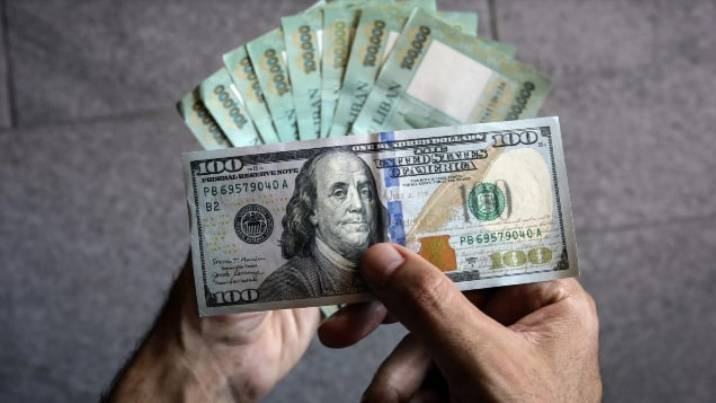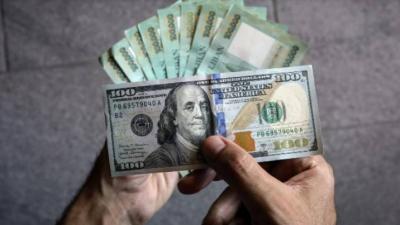In the midst of the chaotic pricing of goods in either Lebanese pounds or dollars, accompanied by unjustified price increases most of the time under the pretext of currency fluctuations—often pricing at an exchange rate higher than the market by 5,000 Lebanese pounds or more—the Ministry of Economy's decision to price goods in supermarkets in dollars starting early next month emerges, despite objections from the supermarket owners' union.
The positives of this decision for consumers include that goods will be priced in dollars and will not be subject to arbitrary increases in Lebanese pounds by merchants, with calculations in pounds being based on the prevailing exchange rate in the market, despite the challenges of determining the exchange rate at every point of sale. However, will goods be priced in dollars without additional marked-ups or rounding in prices? Will we see prices at $1.67, or will "rounding" reign supreme leading to $2 prices?
According to critics, the downsides of dollar pricing outweigh its benefits. Firstly, because the exchange rate at the time of settling the final bill in pounds will continuously differ, forcing shop owners to adopt a rate that shields them from fluctuations. Secondly, there is a difficulty in pricing locally produced goods compared to imported ones, explained former IMF official Mohamed Al-Hajj to "Nidaa al-Watan," noting that imported goods incur local costs such as transportation, labor wages, and rent, which will cause prices of those goods to vary according to changes in operational costs. He questioned how operational costs would be priced in dollars to be added to the net price of imported goods, and who would determine the profit margin on those goods.
Regarding locally produced goods, Al-Hajj mentioned that industrialists also import raw materials necessary for local production; thus, part of their production cost is calculated in dollars and the other part in pounds. He indicated that not all production costs are dollar-denominated, especially since salaries and wages have not been dollarized and a significant portion remains in pounds, in addition to other operational costs such as transportation, fees, and taxes.
Concerns about transparent profit margins
Al-Hajj expressed concern over how profit margins will be determined in a fair and transparent manner given these technical pricing challenges in dollars and pounds, particularly "in a country lacking regulatory institutions or specialized administrations for defining suitable techniques and mechanisms." He noted the existence of tens of thousands of sales points, including supermarkets, mini-markets, and shops, making it administratively impossible to monitor prices. He feared that, as happened in other countries, the government may resort to controlling prices, which would inevitably lead to shortages of goods in the market and the emergence of a black market similar to that during subsidy days.
Increased demand for dollars
Additionally, Al-Hajj argued that dollar pricing will open the door for private sector employees to demand their salaries be fully converted to dollars, followed by public sector employees seeking to link their wages to rising inflation rates, ultimately leading to increased demand for dollars and further inflation and collapse amidst a lack of comprehensive solutions to address the crisis in macroeconomics.
Al-Hajj concluded that the reasons behind the decision to price in dollars stem from poor economic and financial decisions made by the authorities, along with the central bank's circulars issued since the beginning of the crisis up to now, which have only led to further corruption and distortion of the existing system.
Dollarization popular among food industry owners
In turn, Monir Al-Bassat, head of the food industry owners' union, confirmed that dollar pricing among industrialists has been the norm since before the crisis began, but with the collapse of the pound and the commencement of exchange rate fluctuations, supermarkets requested that factories price invoices in pounds according to the exchange rate at the time of issuance. "This created a problem for us because we price invoices based on a certain exchange rate at issuance and receive payment two weeks or twenty days later when the exchange rate may have collapsed further, exposing us to financial losses." He pointed out that for wholesale traders, pricing is essentially in dollars and the value-added tax is calculated at an exchange rate of 15,000 Lebanese pounds.
He indicated that negotiations are still ongoing with supermarket owners to start issuing invoices in dollars when consumer pricing in dollars commences.
As for the cost of locally produced goods, Al-Bassat mentioned that they are essentially priced in dollars, which includes production costs in dollars and operational costs in pounds based on an established and existing accounting system.
Preventing price hikes
He noted that dollar pricing at sales points will eliminate the artificial inflation in prices created by merchants and supermarkets to avoid losses from exchange rate fluctuations, clarifying that merchants previously raised the prices of goods when selling them to supermarkets by a margin of 5,000 pounds to avoid losses, only for supermarkets to increase them by another 5,000 or 10,000 pounds for the same reason, along with the basic profit margin, resulting in higher prices for consumers than actual costs.




